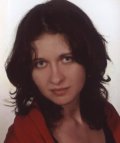 In this thesis the focus was on design, development and fabrication of microfluidic devices with integrated membranes.
In this thesis the focus was on design, development and fabrication of microfluidic devices with integrated membranes.
‘In the first part of the work, a microfluidic system for blood oxygenation - a so called lung-on-a-chip - was introduced,’ says Magdalena Malankowska. ‘Here, one chamber is devoted to pure oxygen, and the other chamber is designed for blood. They are separated by a dense permeable membrane.’
The second part of the thesis introduces the concept of a microfluidic device, as a gas-ionic liquid micro-contactor. This concept is designed to remove CO2 from anesthesia gas containing Xe.
‘In this device quite different parameters were to be optimized,’ Magdalena says. The working principle involves the transport of CO2 through a flat PDMS membrane, followed by capture and enzymatic bioconversion in an ionic liquid solvent.
‘Experimental measurements showed that the choice for PDMS was not favourable here,’ says Magdalena. ‘Therefore, we considered other materials for the wall constructions within these chips: glass, or silicon. As proof of concept demonstration, gas permeability experiments were performed, followed by experiments with ionic liquid and ionic liquid with the enzyme.’
Also, in this thesis work an integrated membrane in the form of a fractal geometry, with nanonozzles as pores, was introduced. Using this alternative concept, controlled addition of gaseous species was feasible. The 3D fractal structures were fabricated at the University of Twente within the Mesoscale Chemical Systems (MCS) group.
‘We created small nanoapertures of approximately 80-100 nm in the corners of fractal pyramids,’ Magdalena says. ‘The calculated gas permeations through the fractal apertures were promisingly high.’
The gas transport through the fractal membranes was compared to the ones based on current dense PDMS (polydimethylsiloxane) thin films. The thickness of a PDMS membrane corresponding to the equivalent fractal gas permeation was in the range of 1-4 μm.
Avoiding animal tests
In her PhD work Magdalena always aimed at working towards better health screening devices, optimizing performance parameters and avoiding waste of precious organic sample material.
‘This may lead to better diagnostic strategies in future,’ she says. ‘Perhaps even more promising, is the prospect to avoid animal testing in medical research considerably.’
Future career
Regarding her future work, Magdalena prefers a career in academics instead of working in industry.
‘The applicability of my research in everyday practice, serves as a strong personal incentive,’ she says. Working on innovative ideas in an open and tolerant atmosphere – and start designing from there - is more favorable within academics than in industry, in my opinion. I am now applying as a post-doc, in order to continue my career, preferably at a European university.’
Spain, Portugal and the Netherlands
During her PhD project Magdalena travelled quite a bit. She performed her work under the Erasmus Mundus Doctorate in the Membrane Engineering program (EUDIME).
The home institute was the Chemical Engineering and Environmental Technologies Department at the University of Zaragoza, within the Nanostructured Films and Particles (NFP) group. The NFP is a member of the Nanoscience Institute of Aragon (INA). Two host universities were: Faculdade de Ciências e Tecnologia at the University Nova de Lisboa (Portugal) and Mesoscale Chemical Systems group at the University of Twente (The Netherlands).
‘When I started four years ago, I had no experience in microfabrication techniques,’ she says. ‘The advantage of visiting different universities, gaining knowledge and learning new skills, is huge. The partner universities benefited from it as well. For example, the University of Zaragoza got acquainted with microfabrication techniques, working with PDMS, and using simulations. They are now adapting these in their research.’
Twente
‘At Mesa+ I worked with the MCS Group, led by Professor Han Gardeniers who was my supervisor, together with Roald Tiggelaar. I enjoyed learning nanolab skills such as soft-lithography, in order to build advanced PDMS-based membranes. Also I collaborated with another University Twente group, within MIRA, more specialized on oxygenation experiments. It is great both expertise areas are present at one university.’
